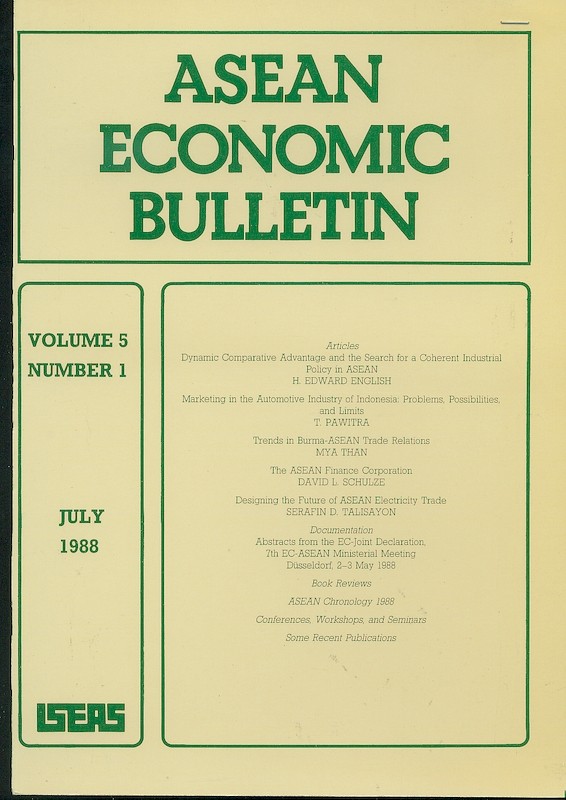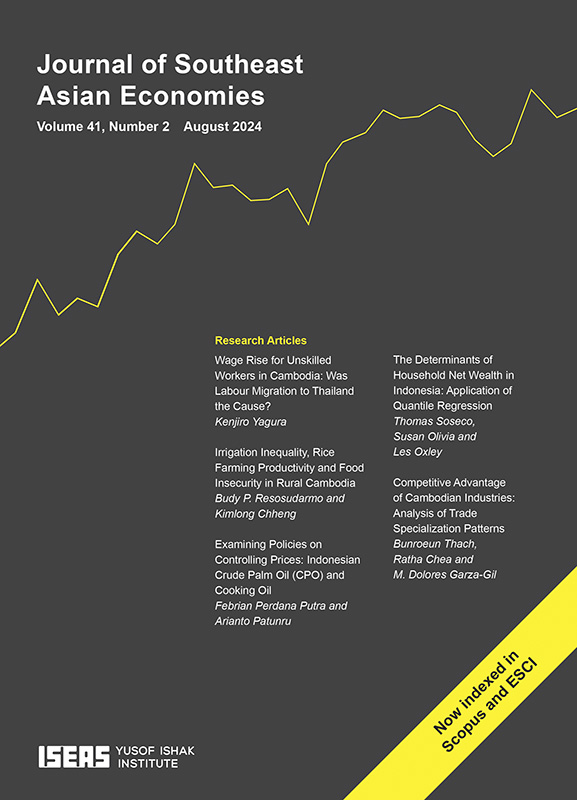ASEAN Economic Bulletin Vol. 5/2 (Nov 1988)
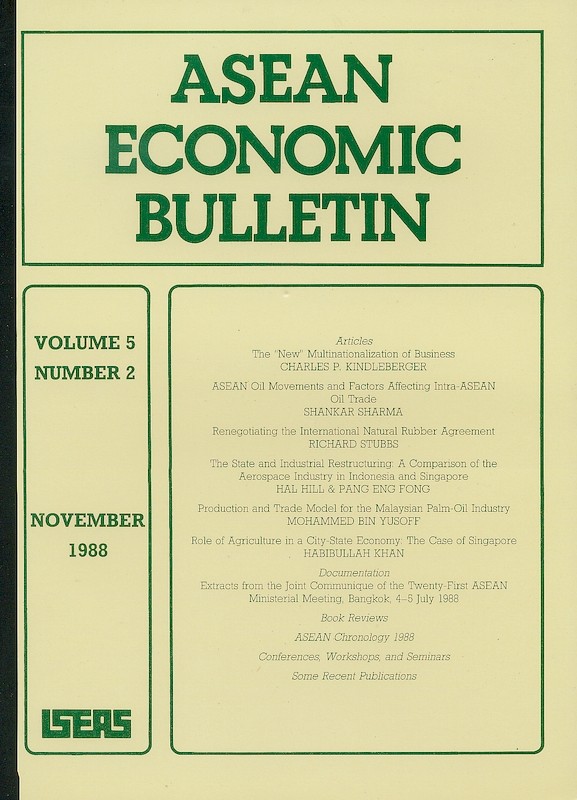
Date of publication:
November 1988
Number of pages:
104
Code:
AE5/2
Contents
-
Preliminary pages
- ARTICLES
-
The "New" Multinationalization of Business, by Charles P Kindleberger, author see abstractThe paper raises questions about the validity of a variety of strongly held views on the multinational corporations, questioning whether there are in fact a great many new forms, and the staying power of some forms alleged to be new, particularly joint ventures, turnkey projects and self-liquidating investments. If further raises the issue whether recent take-overs of multinational corporations in leveraged buyouts, followed by a break-up and sale of various subsidiaries to different buyers, may nut testify against popular theory that the multinational corporations came into being to internalize what would otherwise be external economies for separate firms dealing with one another vertically. The same scepticism applies to whether the multinational corporation is a unit rather than an agglomeration of separate entities, a question raised by the unitary tax on corporate profits in several tax jurisdictions.
-
ASEAN Oil Movements and Factors Affecting Intra-ASEAN Oil Trade, by Shankar Sharma (A), author see abstractThis article examines the patterns of intra-ASEAN oil trade observed across countries and across time and attempts to explain the factors affecting them. A brief account of the size and direction of ASEAN trade and the role of oil in intra-ASEAN trade are also discussed. Geographical proximity along with the higher regional growth rates of both oil production and consumption, mismatch between domestic refinery yield and product demand, a significant decline in oil demand in major ASEAN oil export destinations, and a weakening role of international oil companies, refinery expansion, and refinery technology were observed to be the major factors affecting intra-ASEAN ail trade.
-
Renegotiating the International Natural Rubber Agreement, by Richard Stubbs, author see abstractThe first International Natural Rubber Agreement (INRA), which came into force in October 1980, expired in October 1987. The relative success of INRA in helping to stabilize the price of natural rubber on the international market persuaded both producing and consuming countries of the value of renegotiating the Agreement. However, each side also had a number of criticisms of the INRAs operation and this along with other factors, including the large stockpile accumulated by the Buffer Stock Manager, made the negotiations very difficult. Finally, in March 1987 a new INRA was concluded which closely paralleled the text of the first Agreement.
-
The State and Industrial Restructuring: A Comparison of the Aerospace Industry in Indonesia and Singapore, by Hal Hill, Pang Eng Fong, authors see abstractThe small aerospace industry of Southeast Asia has been growing rapidly, principally in Indonesia and Singapore. The measures adopted to promote the industry in these two countries could hardly be more different. The Indonesian Government has accorded high priority to full-scale assembly and manufacture of aircraft, aided by large state subsidies and a heavily protectionist trade regime. By contrast, the Singapore strategy has been to develop the island as an aviation support centre, emphasizing in particular the service-related activities deriving from the country's location and its competitive outward-looking commercial sector. These alternative approaches are examined and their relative merits assessed.
-
Production and Trade Model for the Malaysian Palm-Oil Industry, by Mohammed Bin Yusoff, author see abstractA model of the Malaysian palm-oil industry was formulated, estimated, and simulated in this study. Simulation results suggest that a reduction in palm-oil export tax could increase production, price received by the producers, exports, and acreage; and reduce world price and local consumption. The effects on production, price received, and local consumption are quite substantial, while the effects on acreage, export, and world price are small. The present government policy is to increase local consumption. The implications of this study suggest that the export tax on palm oil should not be reduced if the policy objectives are to be achieved.
-
Role of Agriculture in a City-State Economy: The Case of Singapore, by Habibullah Khan, author see abstractThe paper shows that agriculture can play a new role in city-state economies such as Singapore. Although high-technology farming will make more effective contributions in future, the non-monetary benefits of agriculture may remain paramount in such economies. It is emphasized that the environmental effects of agriculture should be measured by using the newly developed techniques in order to make a proper evaluation of their economic role.
-
DOCUMENTATION: Extracts from the Joint Communique of the 21st ASEAN Ministerial Meeting, Bangkok, 4-5 July 1988
-
BOOK REVIEWS: Philippines: A Framework for Economic Recovery. A World Bank Country Study, by Teofilo C Daquila, author
-
BOOK REVIEWS: Socio-economic Development of ASEAN: An International Perspective, by Habibullah Khan, by Subbiah Gunasekaran, author
-
ASEAN Chronology 1988
-
Conferences, Workshops, and Seminars
-
Some Recent Publications

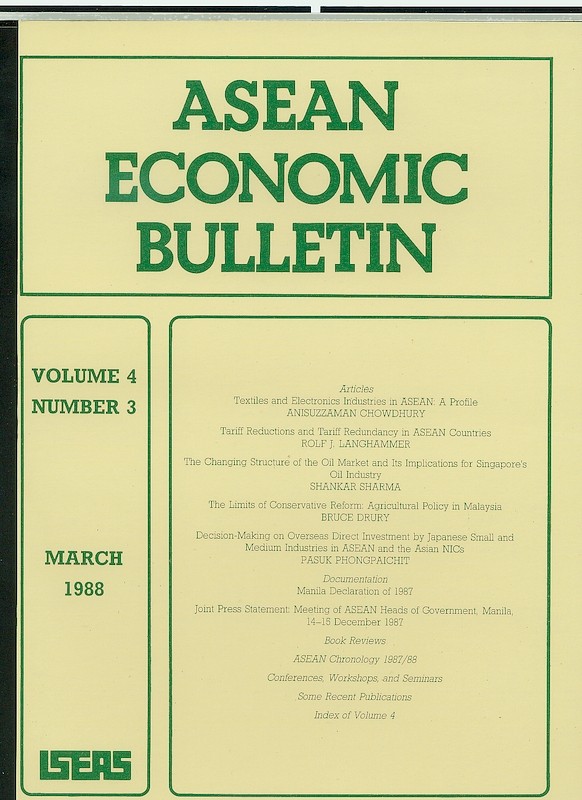
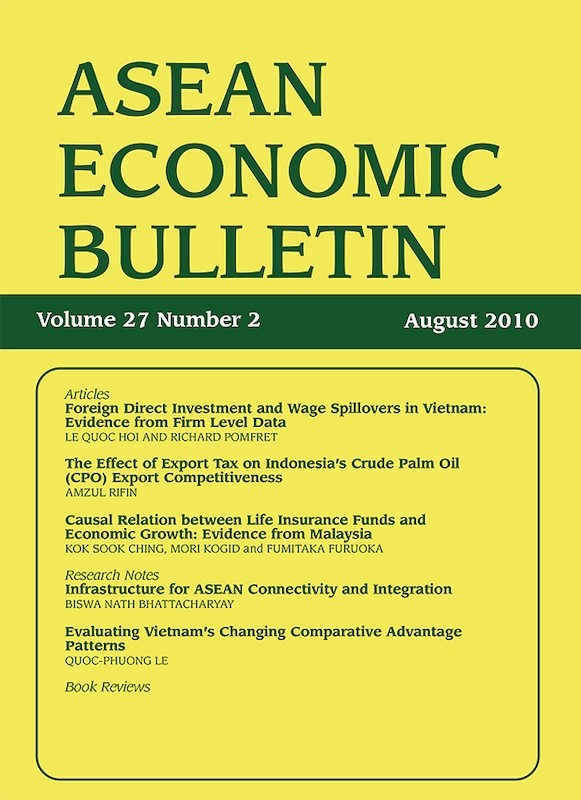
![Journal of Southeast Asian Economies Vol. 30/1 (Apr 2013) [formerly ASEAN Economic Bulletin]](/cover/AE30-1.jpg)
